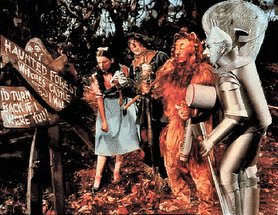The Purpose of High School Athletics
I submitted this piece as a letter to the editor of the Pittsburgh Post-Gazette. I've not been contacted regarding its publication so here it is for your comment.
Colin Dunlap expresses his view, in the April 11 edition of the Pittsburgh Post-Gazette, that "high school sports is losing its importance in society." The basis of Dunlap's viewpoint is that, for sports other than football, high school students no longer need high school sports as a vehicle to get to college or the pros anymore.
Dunlap's article describes how non-high school basketball, baseball, softball, soccer, golf, tennis, and swimming are losing their relevance for top athletes. These top athletes, according to Dunlap, are increasingly finding success by advancing through Amateur Athletic Union (AAU) and other sports associations, and are playing at the collegiate and professional levels without having participated in high school interscholastic programs.
Dunlap might have a valid point if the purpose of high school athletics were to serve as farm teams for college or professional teams. But that's not its purpose. Far from it. I refer Dunlap to the Pennsylvania Interscholastic Athletic Association (PIAA) website. In the very first paragraph providing an overview of the PIAA, the following statement appears: "Participation in interscholastic athletics offers students significant lifetime learning experiences that are unduplicated in other areas of the total educational program." The PIAA website further states that the "system that best serves the student-athlete emphasizes the amateur, educational, and character-building aspects of high school sports." PIAA serves high school athletics by, among other things, emphasizing the educational values of interscholastic athletics and promoting sportsmanlike competition.
That's very interesting. It describes a system of interscholastic athletics that serves all student athletes, not those select few who will compete at the collegiate and professional levels. It describes a system where athletics is a healthy component of a well-rounded life. It describes a system where students can learn valuable lessons in teamwork, sportsmanship, and leadership.
Mr. Dunlap, most student-athletes are never going to make the headlines, and you're never going to write about them in your column. But they're the ones for whom interscholastic athletics programs exist. They are needed, and they are important to our society, perhaps now more than ever.




0 Comments:
Post a Comment
<< Home